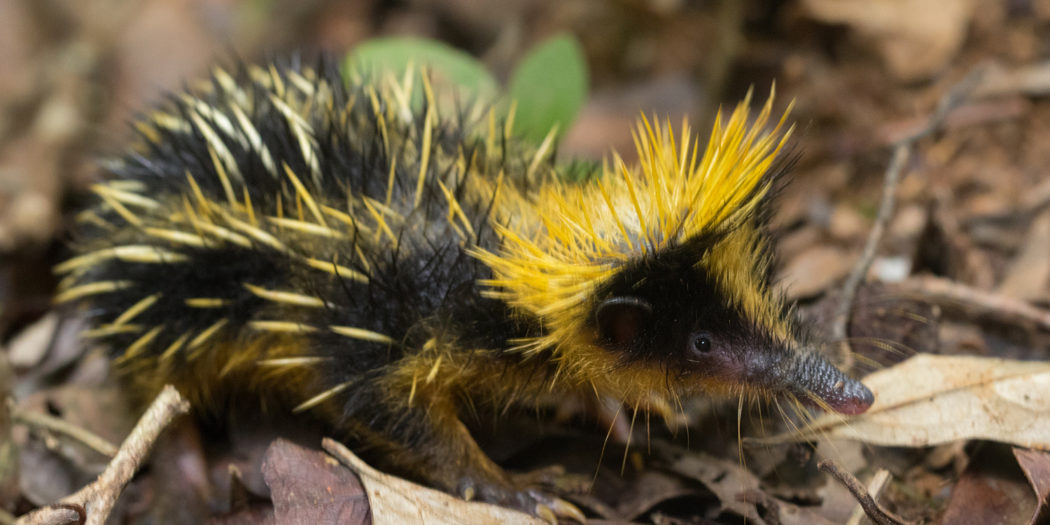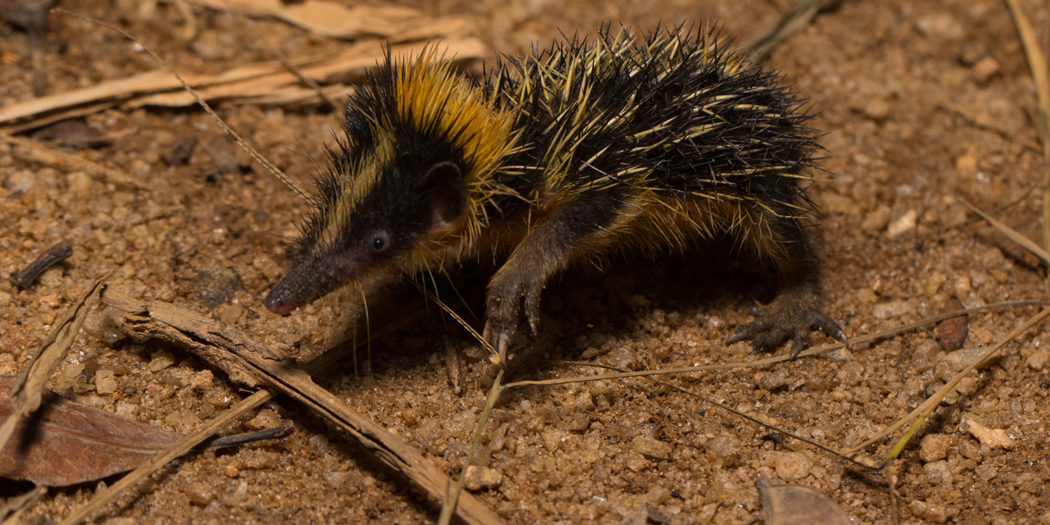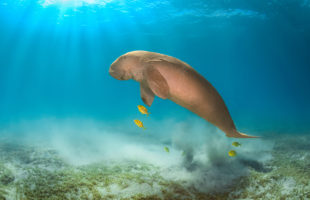Most animals that only occur in Madagascar are very special. Also the streaked tenrec has its peculiarities and is considered to be the most highly specialized of all 31 tenrec species. They belong to the hedgehog tencres – they have spines like hedgehogs, but are actually not even related to the hedgehogs. Also the spines are not completely genuine: It is rather a bristly fur, from which spines protrude in the back, neck and head-area. Characteristic for the Lowland Streaked Tenrec (Hemicentetes semispinosus), which is the subject of this article, is the yellow-black striped fur pattern. It only occurs along Madagascar’s east coast, but it lives in rainforests as well as small forest areas near rice fields, even conquering some areas inhabited by humans. The southern border of the deposit lies approximately in the Andringitra Mountains, the northern border are the Marojejy and Anjanaharibe-South National Parks.
With its large hands and feet, the streaked tenrec digs burrows only one hand wide under the ground, which it uses as a place to sleep. The entrance is covered with grasses and undergrowth, the sleeping area is padded with plant parts. The toilet is dug in front of the exit – an outer latrine, so to speak – who wants to sleep next to their legacies? Every two weeks the streaked tenrec changes the burrow in order to offer potential predators as little opportunity as possible for a successful haul.
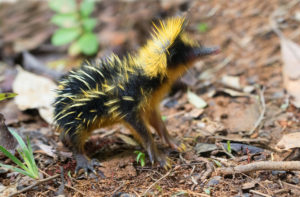
Fossa and ring-tailed mongoose belong to the biggest enemies of the streaked tenrec. Unlike other tenrecs, the Lowland Streaked Tenrec cannot curl up into a spiky ball to protect itself. If there is no possibility of escape, it places its spines in the neck and on the head to a kind of mohawk hairstyle. If the opponent does not retreat, the tenrec turns to attack and bounces headfirst towards the opponent. The spines have small barbs and drill themselves directly into the skin of attackers. Thrown spines always grow back, so that the streaked tenrec is soon again fully equipped for the next attacker.
Only the spines of the stridulation organ cannot grow back. This is a certain area of thicker spines on the back that can be rubbed against each other, making quiet noises. With the noises caused in this way, streaked tenrecs in the forest communicate with their family for several metres. In addition, their sense of smell is very well developed, while their tiny eyes can see very little. It is also known that streaked tenrecs produce clicks with their tongues in order to orient themselves to their echo.
At dusk, streaked tenrecs become active, leave their burrow and browse through the dense foliage of the forest floor in search of earthworms and, more rarely, insect larvae. In the course of a night they eat partly food quantities in the order of their own body weight. There is a second activity phase in the early morning, during the remaining day and night times they are only sporadically active and oversleep most of the time.
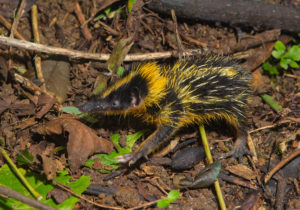
With the rainy season from October onwards, the social behaviour of the streaked tenrecs changes considerably. Until now, he was only a loner, but now families and distant acquaintances gather in small colonies. It is time to provide for descendants! And when is the selection better than when streaked tenrecs from the entire area come together? The choice of a partner is made quickly, and after a sniffing ritual it goes quickly to the point. The females are pregnant for about two months, but unlike other tenrecs mothers do not release the father of the young from his duty: he must take care of the rearing just like the female.
Up to eleven young can be born per litter – an impressive number for such a small animal. However, the tenrec mothers are also somewhat better equipped than the average mammal: they have up to 20 teats and thus enough space at the milk bar for large litters. The young are developing rapidly. They are born blind and naked, but leave the burrow for the first time at the age of nine days. Already with four to five weeks the first young are sexually mature – a remarkably early maturity, as one knows it under the mammals at most of mice. Accordingly well streaked tenrecs multiply in the rainy season and reach maximum weights of up to 220 grams with 15 cm body length. It is estimated that the animals become only about two years old.

When the dry season returns in May, another peculiarity of the streaked tenrec comes into play. Their body temperature will drop until it is just above the ambient temperature. This saves them valuable energy. At a certain temperature, however, they hibernate just like other tenrecs.
You have the best chances to discover a Lowland Streaked Tenrec during the rainy season in the national parks Andasibe-Mantadia with the adjacent reserves Mitsinjo, V.O.I.M.M.A. and Maromizaha as well as in the reserve Akanin’ny Nofy. They are relatively common and are therefore not considered to be endangered. But beware of the spines – if approaching these little guys too quickly your hands might suffer!
 MADAMAGAZINE Your Magazine about Madagascar
MADAMAGAZINE Your Magazine about Madagascar
